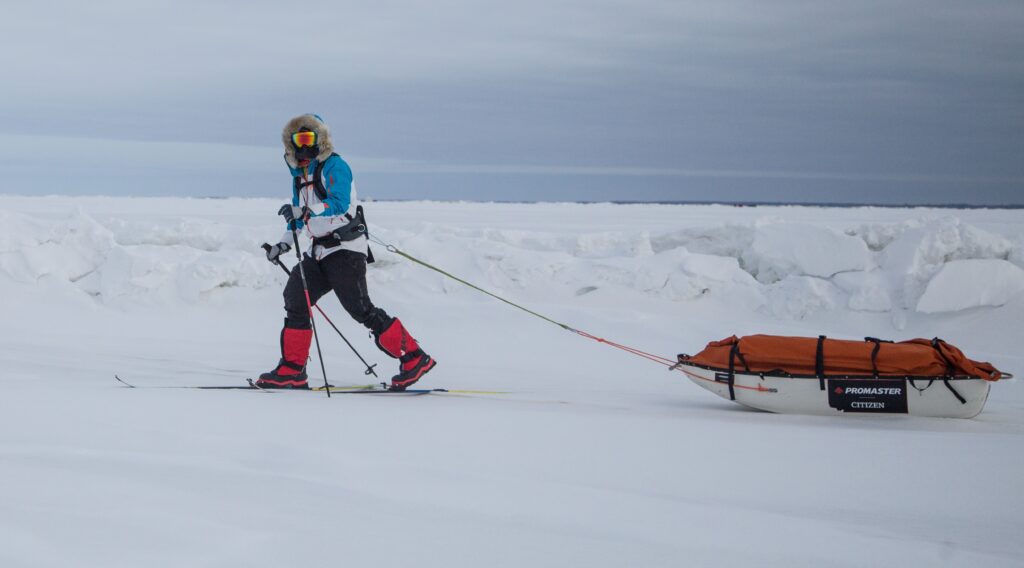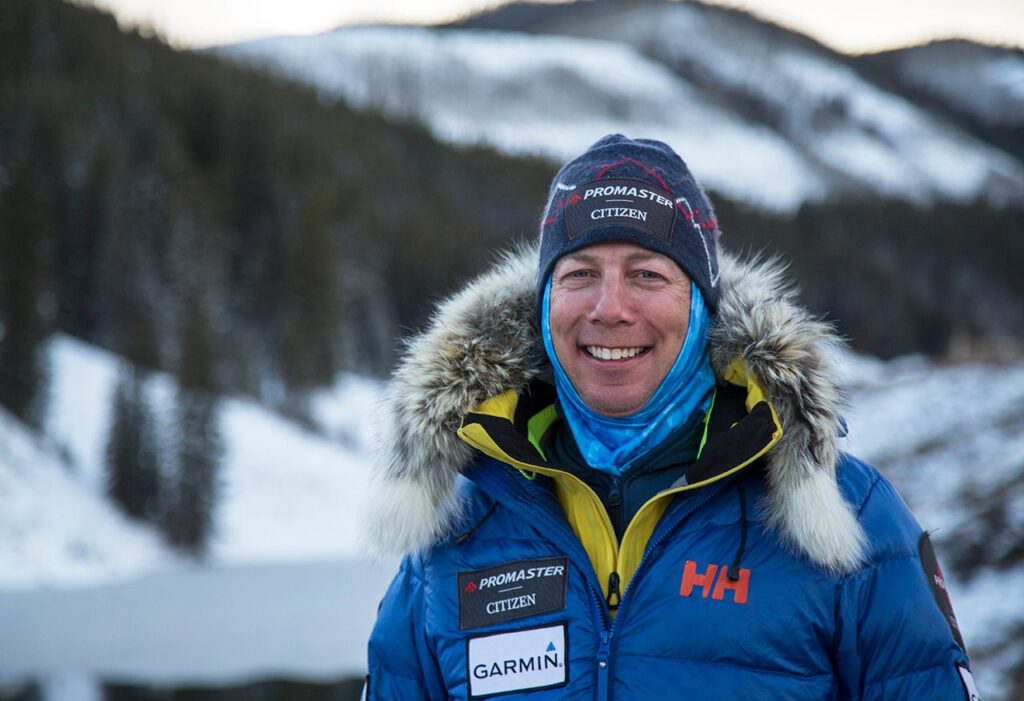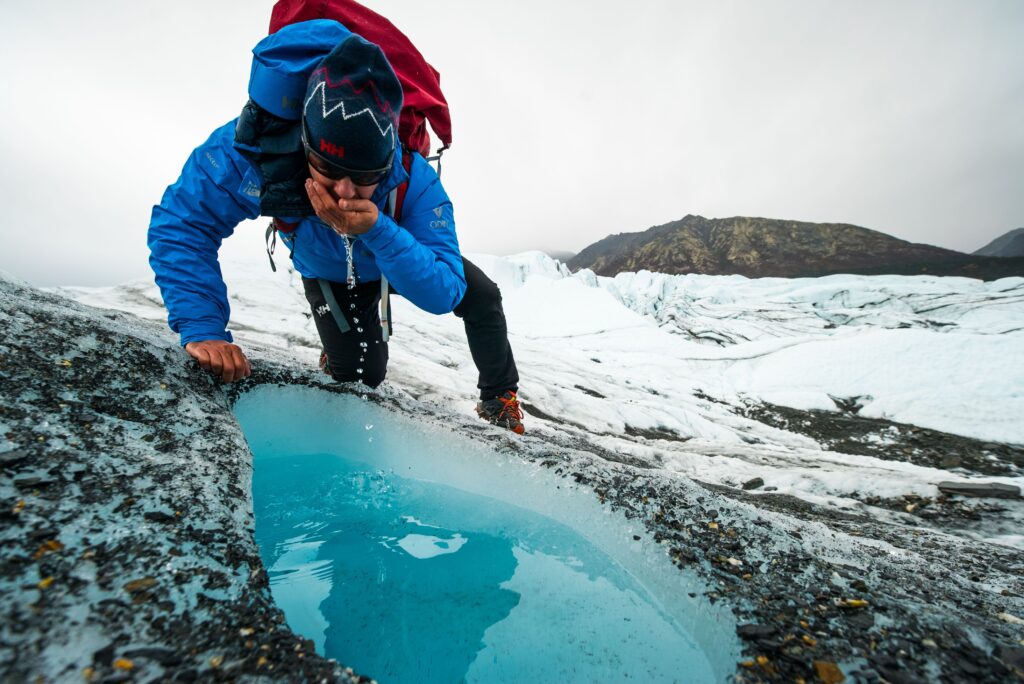All that surrounded him was an endless expanse of white nothing. It was like walking across a giant blank page. His nerves were constantly on-edge in case his foot fell through the thin ice, plunging him into the sub-zero depths of the Arctic ocean. For two long months, he struggled forward, dragging 145kg of food and supplies in his sledge. Every step was a constant battle.
But Eric Larsen was prepared for these hostile conditions. He had been here before. In fact, Eric is a polar explorer who has completed more north and south pole expeditions than any other American in history. What he wasn’t prepared for was how much harder the 500-mile journey across the Arctic ocean would be this time around. He was competing in a race from the Northern Ellesmere Island to the geographic north pole – the hardest expedition in the world – not to be the first to reach the finish line, but to be the last.
Larsen coined his journey the ‘Last North’, as never again would this human powered, unsupported expedition from land to the north pole be feasible.
Why? Global warming meant the finish line was melting.

The rate that the Arctic ice is disappearing is continuously increasing, making polar travel ever more challenging. Predictions made by the Arctic Council in a 2017 report state that the Arctic will be completely melted by 2040.
According to the National Oceanic and Atmospheric Administration (NOAA), the Arctic is warming twice as fast as the rest of the planet. This is partly thanks to a process known as Arctic amplification – a vicious cycle whereby energy from the sun that was once reflected into the atmosphere by large expanses of white ice is instead being absorbed by the dark, increasingly exposed ocean. This causes the water to heat more rapidly and, in turn, melt more of the ice.
“This positive albedo feedback mechanism is like when you have an echo from a speaker,” says Dr Michel Tsamados, a polar observation and modelling scientist at University College London. “It’s kind of a positive feedback loop.”
It has been five years since Larsens’s momentous expedition, but he visits the region regularly and has seen the Arctic ocean change since his first trip in 2005. “I was just up there last year,” he says. “The character and the nature of the sea ice is dramatically different than it used to be.”
“The freeze-ups are coming later; the thaws are coming earlier. You see thinner ice in general and ice that’s much more fractured than it used to be because it’s thinner.”

Scientists at NASA have been monitoring the loss of Arctic sea ice via satellite since 1978 and the results are positively chilling. It is now declining at a rate of 12.8% a decade, which could cause devastating consequences to the environment. “It will have repercussions on the rest of the world,” says Dr Tsamados.
If the gradient between polar region temperatures and temperatures in lower latitudes of the Earth continues to get steeper, this will lead to a wavier jet stream, affecting weather patterns around the globe. “This would result in potentially more persistent weather, more droughts, more precipitation and the other impact is that it could affect the general circulation of the ocean,” says Dr Tsamados.
Human greenhouse gas emissions directly correlate with melting polar ice and are causing the earth to warm 10 times faster than it should. In fact, the last time that Earth had such large levels of carbon dioxide (CO2) in the atmosphere was 3 million years ago in the Pliocene period. CO2 is a greenhouse gas that comes from humans burning fossil fuels like oil, coal and natural gas as well as other activities like deforestation. It acts like a blanket, trapping heat near to the surface of the earth. “Every ton of carbon dioxide we emit results in three-meters squared of sea ice being melted at the end of the summer. I think that’s quite striking,” says Dr Tsamados, citing a recent study published in Science magazine. “To put this into context, a laptop costs about 1.5 meters squared of sea ice while a return trip to the US costs more than 5 meters squared.”
What can be done? According to Larsen, it’s time the conversation turned to the “last great frozen wildernesses on the planet”. He says: “The quality of our environment is directly connected to the quality of our lives. We need to act now. We really don’t have time to delay. Our governments need to take the lead.”
This message echoes that of Extinction Rebellion, a climate activist group that have been making news headlines recently by blocking roads around the world in protest of climate change. The group claims that governments need to recognise that we are in a “climate emergency”. Nuala Mai Gathercole Lam, a member of the group, says governments are “in denial about the gravity of the situation”. She says: “They’re not acknowledging that human life is at risk if we don’t do anything, so they need to look at the science and act as if it’s real.”
While for most of us, the phantom-white plains of the Arctic sea ice may seem very far away, it is clear that the time has come to stop giving their increasingly rapid disappearance the cold shoulder. For the few people like Eric Larsen who get to visit these frozen wildernesses, the incomprehensible reality of global warming is strikingly apparent.

Written in 2019.